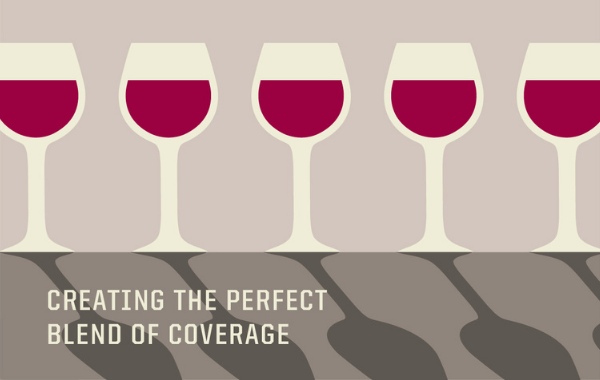Meeting the Unique Needs of Vineyards & Wineries

With harvest wrapping up and the holidays just around the bend, we’ve entered a season full of popping corks and raising glasses. Vineyards and wineries fall under Central’s manufacturing vertical, which encompasses a wide range of businesses, including metal goods, building materials and bakeries. This month, we sat down with Director of Manufacturing Underwriting, Anne Russo, to talk about winery coverage and learn more about how Central approaches writing policies for a vertical segment with needs and uses as varied as the wines they produce.
What is vineyard & winery coverage?
With vineyards and wineries, there are coverage needs that a typical business property form doesn’t cover. Vineyard and winery coverage bridges that gap to cover everything from the grapevines and trellises to pesticide exposures.
What are the unique considerations when it comes to winery coverage and risk?
Wineries and vineyards are always a unique situation. They range from tiny hobby farms on properties with family-owned farmhouses to giant, sprawling corporations. Others have on-site restaurants, hotel rooms, live events and venue spaces. The uses, possibilities and risk levels really run the gamut, making it our job to ensure they are properly covered.
In general, winery coverage encompasses an interesting combination of coverages, depending on how big or small the operation is. In determining the right combination of coverage, we have to consider how a winery space is being used. If a winery is hosting wine tastings, that’s a pretty well-controlled scenario in terms of liability risks. Once you add in live events like weddings, there’s a lot more liability involved. Concerts are another popular winery use, and they present a whole new level of risk with lots of people coming on-premises at the same time.
Beyond events, wineries also have lots of equipment and food safety regulations to think about. If the equipment breaks down, it can potentially ruin a large batch of product. If things aren’t handled properly, it can pose a health risk. In addition, there are property considerations. Since many wineries are located in rural areas, we have to look at what fire services are available in the area. Are they full-time fire departments or volunteer departments? There’s just so much that goes into determining risk with this group.
Because wineries and vineyards are so different, there is no one-size-fits-all. At Central, we pride ourselves on the relationship that we have with our agents, especially in the manufacturing vertical. Our team is specialized, but we can’t be the experts on every single winery or manufacturer, so we lean on our agents and their relationships with the customers. As trusted partners, our agents are able to provide insights on everything from what’s different about a certain winery to why they’re a good fit for Central to how we might best fit coverage. All of their knowledge contributes to discussions around coverage and pricing — and ultimately to the policy we write for them. It’s vital that we have a relationship with our agents where we can trust what they’re sending us with the knowledge that they have our best interests in mind, just as we do with them.
Any interesting winery claim stories to share?
Not any myself, but I grew up near Lake Erie which was the site of a major winery accident in 2000. There is a historic winery on Middle Bass Island that had a terrace collapse under dozens of tourists, resulting in 75 injuries and one death.
The building was on the National Register of Historic Places. When you have a property loss with a historical building, there are a slew of extra hoops you have to jump through to make sure that everything is rebuilt properly. The materials and techniques also tend to be more expensive. In this instance, obviously wine was involved. There could have been a liquor liability exposure from that, as well as general premises exposure with injuries resulting from the collapse. With having to shut down for a period of time, they would have also lost income. You’re looking at so many different coverages just from that one incident, which is why it’s important to really understand usage, risks and liabilities when writing for wineries.
If Central were a wine, how would it be described?
“Uncompromising quality nurtured by a community of friends and partners.”
The information above is of a general nature and your policy and coverages provided may differ from the examples provided. Please read your policy in its entirety to determine your actual coverage available.
Like this:
Loading…



